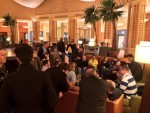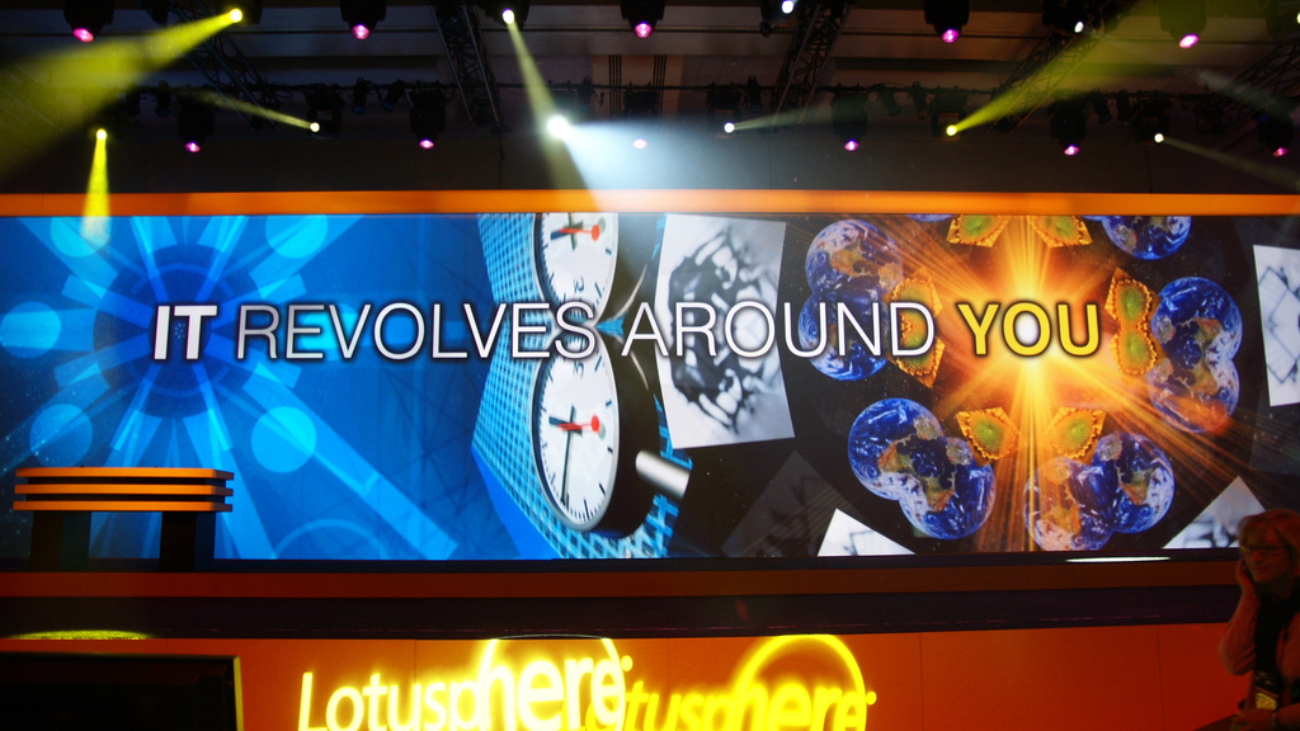It’s about this time of year that thoughts in the IBM/Lotus community traditionally turn to Orlando, to the Dolphin & Swan hotels, and to IBM’s major collaboration and social business event of the year.
From Lotusphere to IBM Connect to this year’s IBM ConnectED, the name hasn’t mattered too much (I still think of it as the ‘Sphere), it was the technology and the people that made the event what it is. Thousands of geeks and business folks alike, flocking to the same space every year to meet, greet, debate and innovate on topics near and dear to their hearts.
 For me personally, it’s been an almost career-long fixture that has led from a couple of hops to Berlin for Lotusphere Europe, through to more than a decade of crossing the pond to Orlando for the real thing. I was telling someone just last week that I’ve missed only two events since 2004. The first was in 2006 when I’d temporarily left the Lotus space to venture into other technologies. It was partly reading the news from the event whilst trying to get my head around HP OpenView systems management products that made me jump back into the Lotus partner space within a few months! Then in 2008, my employer decided at the last moment to cancel my ticket – the last straw in a long debate about the importance of collaboration technologies to their business. Having handed in my notice, Lotusphere 2008 coincided with my first week of running my own business.
For me personally, it’s been an almost career-long fixture that has led from a couple of hops to Berlin for Lotusphere Europe, through to more than a decade of crossing the pond to Orlando for the real thing. I was telling someone just last week that I’ve missed only two events since 2004. The first was in 2006 when I’d temporarily left the Lotus space to venture into other technologies. It was partly reading the news from the event whilst trying to get my head around HP OpenView systems management products that made me jump back into the Lotus partner space within a few months! Then in 2008, my employer decided at the last moment to cancel my ticket – the last straw in a long debate about the importance of collaboration technologies to their business. Having handed in my notice, Lotusphere 2008 coincided with my first week of running my own business.
The Sphere is where I’ve met huge numbers of IBMers, colleagues and peers. Folks that started as business contacts bumped into in some corridor in the Dolphin, whom I now consider very very close friends – a significant part of the narrative of my adult life.
So why this post?
As most of you will be aware, IBM ConnectED takes place next week in the Swan Hotel. More technical, more intimate, smaller and less glamorous this time, but still part of the two-decade long history of this great gathering. It will have a different feel for sure, but I have no doubt that enough of the familiar events, locations, features and faces will be present to make it a hugely fun and informative week.
Sadly, it will also likely be the final ‘Sphere event. The IBM contract is up at the Dolphin and Swan, and as I’ve previously blogged, IBM’s focus seems to be on very large consolidated events in Las Vegas for the future. I’m not saying that’s a bad thing by the way, just that it will be different.
So, it’s the last ‘Sphere, I’ll be there, right? Nope. Not this time.
There’s a few reasons while I’ll be missing it:
- The most important is that I promised my wife Philippa that I wouldn’t do it again this year. Almost every January since the kids were very small, I’ve left her to look after the brood for an entire week whilst I had fun and did business in the Floridian sun (at the time of my first Orlando trip in 2004, Philippa was 5 months pregnant with our youngest, and was already looking after three under-7s!). This at a a time of year when things are most difficult for those of us that are self-employed – Christmas and New Year eat into our potential billable days, and then we take another week out to head to Orlando, whilst usually paying $2-4000 for the privilege! I would hate to add up what the lost earnings and expenses add up to over the time I’ve attended – that wouldn’t be a happy number. The ‘Sphere has been an enormous sacrifice for my family and this was the year when it needed to end…
- The fostering that I spoke about at the NerdGirl Sparks session last year has now well and truly kicked in, and we’re about to have another little person move in this week. This alone would make it almost impossible to attend this time around.
- My business is less IBM-centric now. This has been a trend for the past few years, but has accelerated since last summer. Don’t get me wrong, I’m still working with IBM Connections, but I’m spending as much (if not more) time on Jive, Tibbr and Yammer (amongst many others) as I am on Connections. Certainly, Notes, Domino and Sametime (or Verse even) are a long way from my focus area these days.
So, for all those that do congregate in Orlando next week, I wish you the very very best time!
Enjoy the beach soccer, the Mai Tais, BALD on the Boardwalk, the ESPN, the Dolphin bar, karaoke in Kimonos, homebrews by the pool, Mat Newman hugs, the pretzel cookies, all of it. Party like it’s still 1999 and there’s almost 10,000 people there. Raise a glass to all those that have been a part of ‘Sphere tradition.
 Most of all, just for me, please close out the ‘Sphere at 4am in the Dolphin Rotunda with the style that it is accustomed to (you could even record a podcast to commemorate the moment)!
Most of all, just for me, please close out the ‘Sphere at 4am in the Dolphin Rotunda with the style that it is accustomed to (you could even record a podcast to commemorate the moment)!
I’ll miss you, Lotusphere.



 For me personally, it’s been an almost career-long fixture that has led from a couple of hops to Berlin for Lotusphere Europe, through to more than a decade of crossing the pond to Orlando for the real thing. I was telling someone just last week that I’ve missed only two events since 2004. The first was in 2006 when I’d temporarily left the Lotus space to venture into other technologies. It was partly reading the news from the event whilst trying to get my head around HP OpenView systems management products that made me jump back into the Lotus partner space within a few months! Then in 2008, my employer decided at the last moment to cancel my ticket – the last straw in a long debate about the importance of collaboration technologies to their business. Having handed in my notice, Lotusphere 2008 coincided with my first week of running my own business.
For me personally, it’s been an almost career-long fixture that has led from a couple of hops to Berlin for Lotusphere Europe, through to more than a decade of crossing the pond to Orlando for the real thing. I was telling someone just last week that I’ve missed only two events since 2004. The first was in 2006 when I’d temporarily left the Lotus space to venture into other technologies. It was partly reading the news from the event whilst trying to get my head around HP OpenView systems management products that made me jump back into the Lotus partner space within a few months! Then in 2008, my employer decided at the last moment to cancel my ticket – the last straw in a long debate about the importance of collaboration technologies to their business. Having handed in my notice, Lotusphere 2008 coincided with my first week of running my own business.